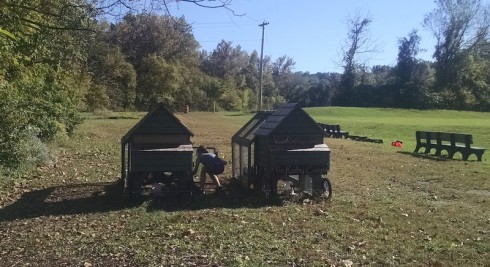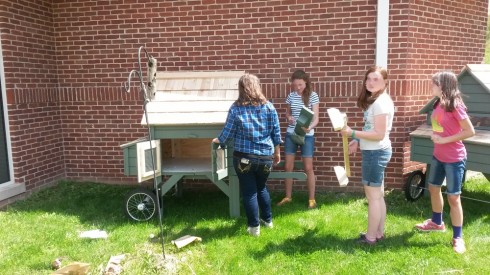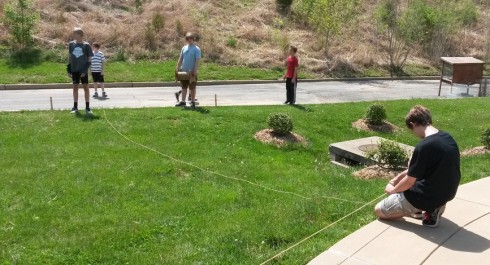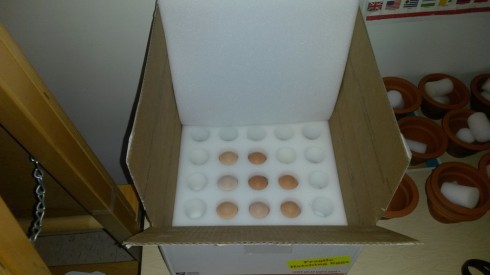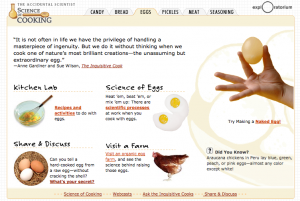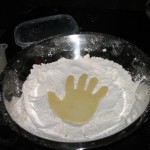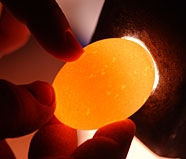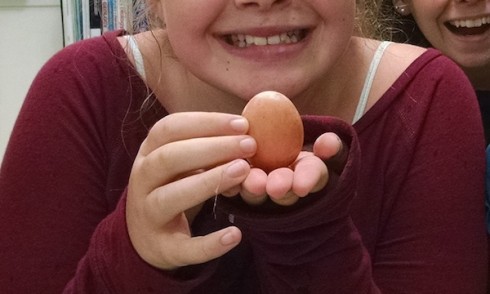
Last year, our middle schoolers named their business Chicken Middle. I was a bit skeptical, but the name stuck. This year, thanks to a lot of help from the school community (thanks to the R’s for the Ruby Coops), we finally have chickens (thanks to Mrs. C. for fostering chicks for us over the summer).
And today, we had our first egg. The students were a little excited.
It looks a little lonely sitting there by itself in the egg carton (thanks to Mrs. D., Mrs. P., and everyone else who donated egg cartons), but with a little luck it will have lots of company soon.
